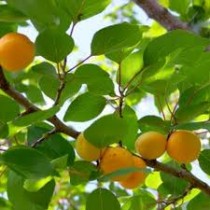Wally Richards – it’s clean up time
Now that we’re into June and heading quickly towards the shortest day, it is a good time to clean up a few things around our garden to prepare for spring.
Deciduous plants such as roses and a number of fruit trees, have either lost their leaves or in the process of doing, so can be greatly assisted with a spray of Lime Sulphur. This does several things which are an advantage to both gardener and plants.
 However Lime Sulphur burns and should not be applied to evergreen plants as it will damage the foliage. It should not be applied to apricot trees or and sulphur sensitive plants either. The burning action assists in the final removal of foliage, burns disease spores and insect pests harboring over in nooks and crannies wanting for better conditions in the spring to emerge. If you can greatly reduce both disease and pest problems now, then you will have better results in the spring/summer period with less spraying to do.
However Lime Sulphur burns and should not be applied to evergreen plants as it will damage the foliage. It should not be applied to apricot trees or and sulphur sensitive plants either. The burning action assists in the final removal of foliage, burns disease spores and insect pests harboring over in nooks and crannies wanting for better conditions in the spring to emerge. If you can greatly reduce both disease and pest problems now, then you will have better results in the spring/summer period with less spraying to do.
With bush and standard roses I suggest that you cut back all the growths to half. This means if the bush roses are about a metre tall bring them back to half a metre. At the same time remove any dead or diseased wood along with spindly stems. Pick up all the bits and debris on the ground and then spray what is left with the Lime Sulphur.
This does two important things, it reduces the amount of plant that you are going to spray and it makes the rose ready for final pruning later in July.
If you have had problems last season with diseases then you could, in the beginning of July, make up a solution of Condys Crystals (about quarter a level teaspoon to a litre of water) and spray the plants and soil underneath the roses with this. With climbing roses just firstly tidy up the plants then do your spraying.
For gardeners who have peaches and nectarines that suffer from curly leaf each season then according to an article I read from England, Lime Sulphur spray is a must to assist in reducing the number of spores that cause the problem later on. I would also follow up with the Condys Crystals as well.
With other Deciduous fruit trees (not apricots) spray the Lime Sulphur as best you can (if they are big trees) and do any pruning you want to do next month.
Remember that Silver Leaf disease is about in winter when its cool and damp so any cutting back and pruning should be done only on sunny days when the soil is on the drier side. Wet times brings about a number of unwanted growths such as moss, moulds, slimes, liverworts and lichens. These growths are unsightly and can in some cases be dangerous where one walks such as paths and steps. ACC might look after you but its not worth the pain and discomfort you have to endure especially seeing a simple spray or two will remove the problems.
Moss in lawns does cause problems for the grasses and should be controlled if you want a nice lawn. Don’t waste your money on treatments of Sulphate of Iron as it only burns the top of the moss which soon reappears again. There are sprays that can be used such as Moss and Liverwort Control that will assist in control of these growths without damaging your garden plants. Just follow the instructions on the bottle for best control and use.
Winter is also the season that you have more spare time when the weather does not allow you to garden and this “non gardening” time can be put to good use by planning and studying aspects related to your gardens.
 During the season you can be so busy actually doing things in the garden that you don’t have the time to research a problem you may have had last season, such as potatoes that did not produce good size tubers, only ones the size of peas (Potato Psyllid).
During the season you can be so busy actually doing things in the garden that you don’t have the time to research a problem you may have had last season, such as potatoes that did not produce good size tubers, only ones the size of peas (Potato Psyllid).
Information comes from two prime sources without having to ask someone. Books and the Internet. I use both when I come across something that I don’t fully understand or to research a new aspect that has become a problem. This is a good lead up to tell you that my first book, Wally’s Down To Earth Garden Guide has been revised and re-published. It was back in 2006 that I finished writing the book and published it, since then its sold about 6000 copies which I am told is very good for a garden book in New Zealand.
Since that first printing a few things have changed such as some products suggested are no longer so readily available or completely disappeared. New products have replaced them and a few new pests have entered our gardens causing frustrations. Thus the revised edition takes care of these points to the best of my ability and it has a better index as well. The book is available from some book shops, garden centres and by mail order.
 Every few years garden guides such as Yates Garden Guide get revised so that they are up to date with the latest gardening information. Do your planning, find out how to overcome any problems that happen in your garden each season and enjoy the relaxing time of winter.
Every few years garden guides such as Yates Garden Guide get revised so that they are up to date with the latest gardening information. Do your planning, find out how to overcome any problems that happen in your garden each season and enjoy the relaxing time of winter.

